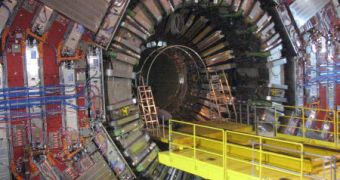The European Organization for Nuclear Research (CERN) has recently announced that the deadline for the completion of the repairs currently being made on its Large Hadron Collider (LHC) particle accelerator near Geneva has been pushed back until late September, amidst concerns that the helium cooling system may fail again if the accelerator is brought online ahead of time. The multi-billion dollar machine is also scheduled to start colliding beams of various particles in late October, as the management wants to keep its promise of beginning to supply physicists with long-sought-for answers, regarding various aspects of the nature of collisions between super-accelerated particles.
"The schedule we have now is without a doubt the best for the LHC and for the physicists waiting for data. It is cautious, ensuring that all the necessary work is done on the LHC before we start-up, yet it allows physics research to begin this year," Rolf-Dieter Heuer, the director general of CERN, explains in a statement. His French predecessor had pushed for the device to be turned on again this spring, but Heuer argued that such a measure would only call for even more pressure on the machine.
The official says that they now have to make sure that the $5-billion investment works according to specifications, and not simply for the eyes of the media. The entire project involves over 10,000 people from all around the globe, who are working around the clock to make the repairs possible and to ensure that no glitches occur in the future. On Monday, Heuer explained that the team was also implementing new safety measures that would be further increased in 2010, when the first full-speed accelerations were scheduled to take place.
The 27 kilometer (17 miles)-long particle accelerator is the most powerful in the world, and it was built under the Swiss-Franc border, near Geneva. It took more than 20 years to complete, and the first particle beams were accelerated in it on September 10th, 2008. However, just nine days later, a leak in the helium cooling system forced the termination of the entire program. The complicated machine was originally scheduled to be restarted in summer, then in spring, and now in autumn.
The good part about the LHC is that it didn't prove to be the apocalyptic machine some scientists feared. They argued that the collisions could produce microscopic black holes, which would then grow and encompass the Earth, as well as a large part of our solar system, bringing about total annihilation. Although countless physicists told everyone that such an event could not take place, a mass hysteria occurred among people who had no idea of how a particle accelerator worked.

 14 DAY TRIAL //
14 DAY TRIAL //